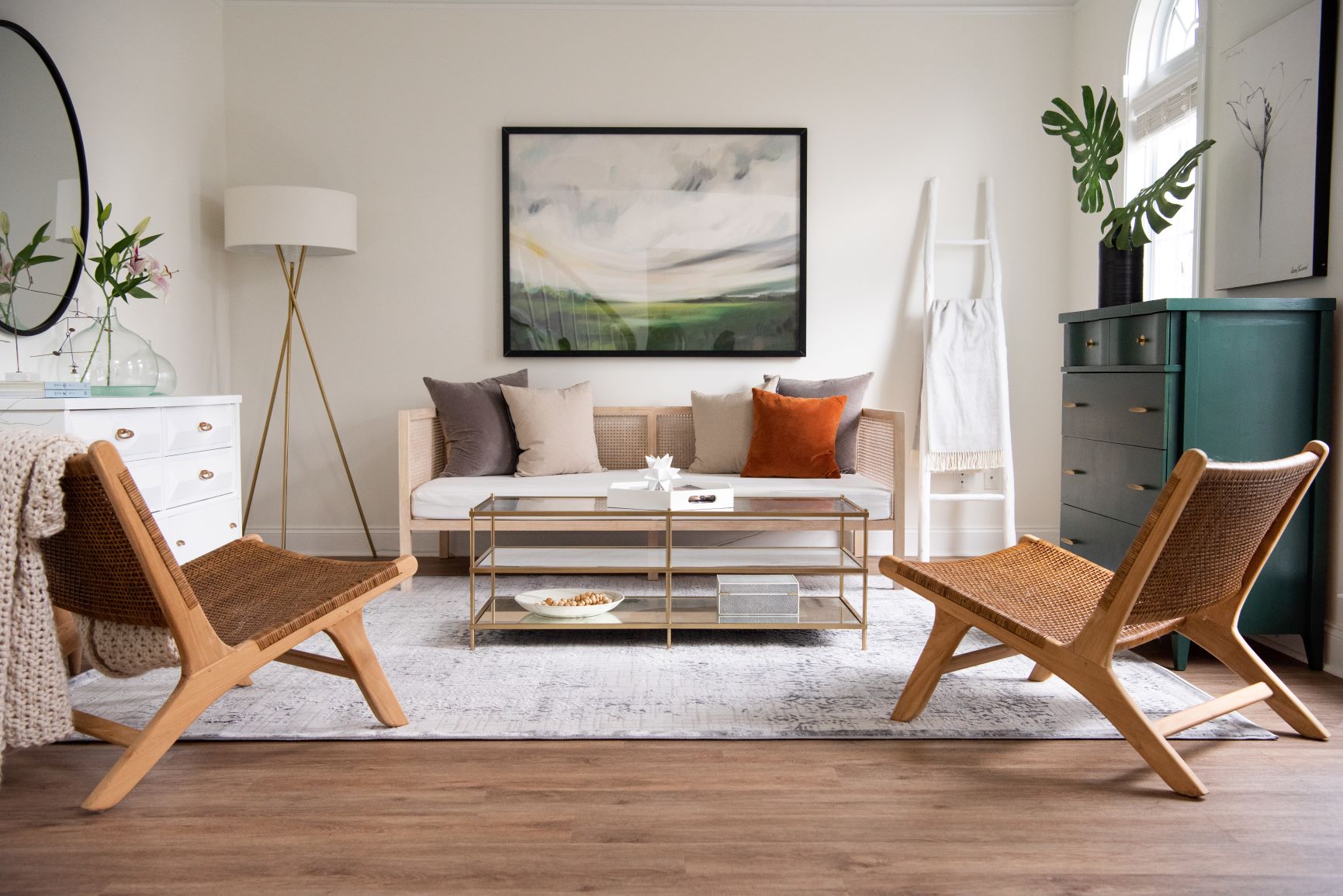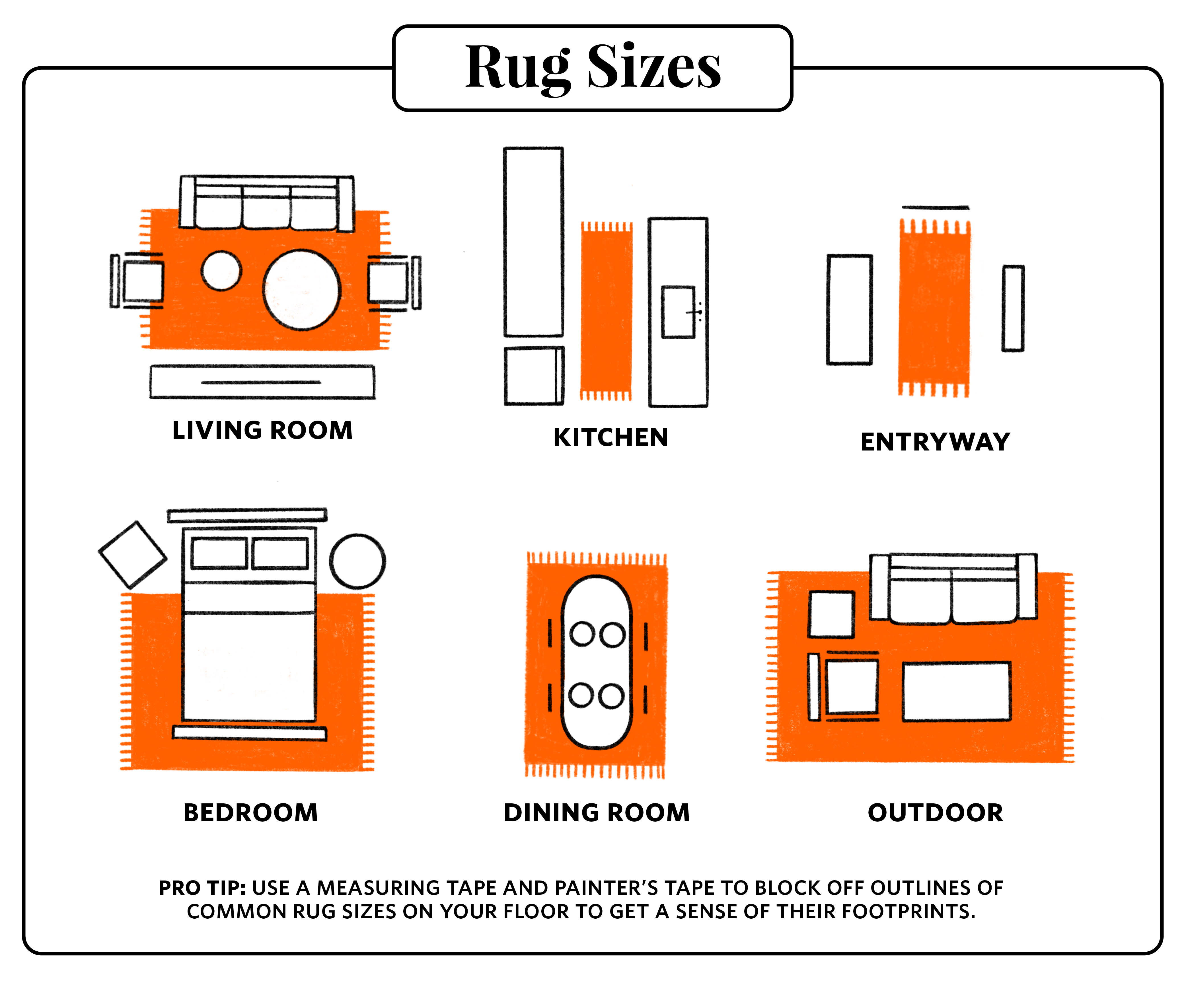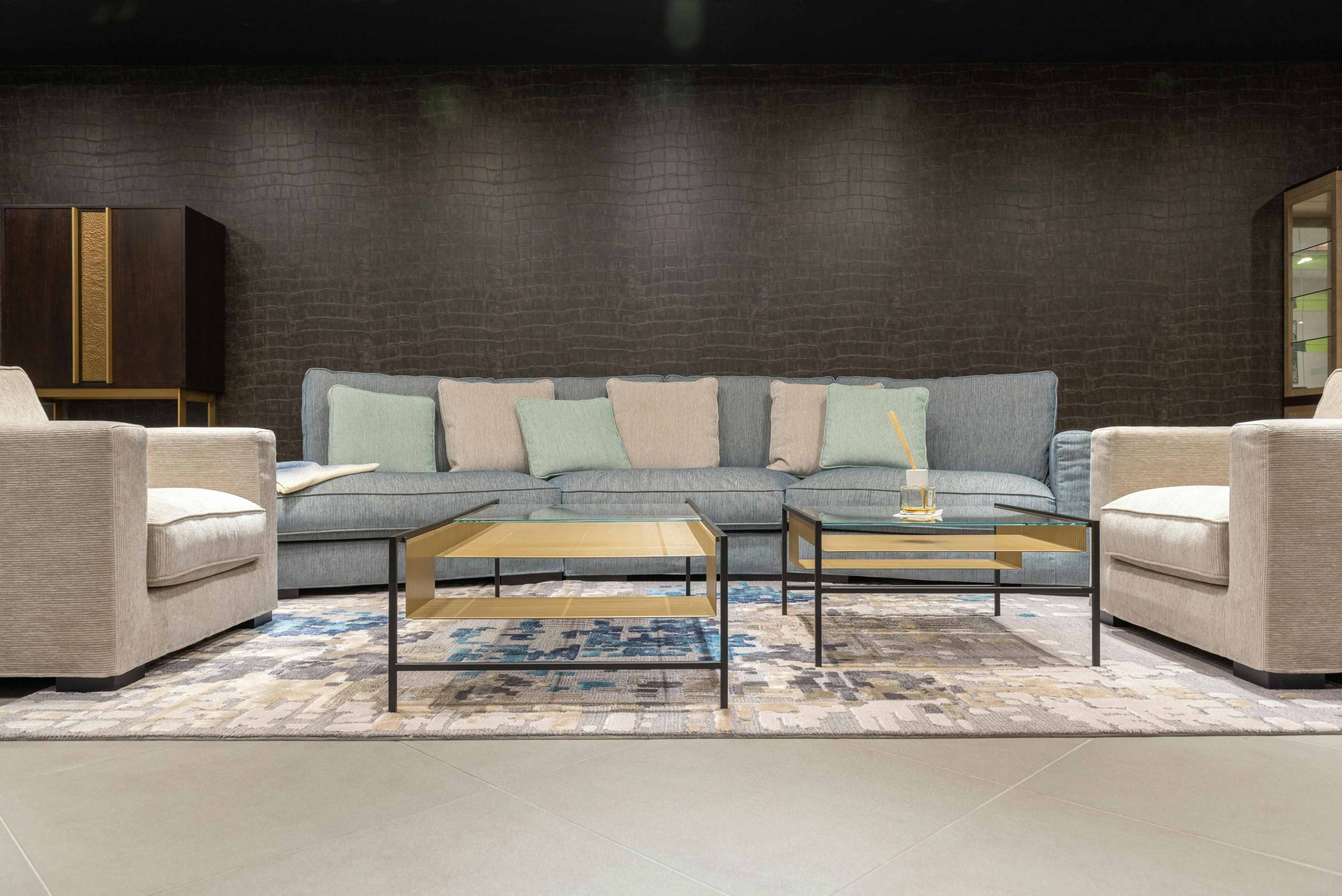Looking for the perfect rug? Learn how to find the right size, style, and placement for every space. and best Rug Fitting Guide.
Whether you’re decorating a small apartment or a large living room, a well-fitted rug can bring the entire room together. By considering the dimensions, furniture arrangement, and design aesthetic, you can ensure that your rug enhances the overall look and feel of the space.
From choosing the right material to selecting patterns and colors that complement your decor, this rug fitting guide will help you make informed decisions that elevate the visual appeal and functionality of your home. With the right tips and tricks, you can effortlessly find the perfect rug for any room in your house.
Choosing The Right Size Rug
When it comes to decorating our living spaces, rugs are an essential element that can instantly enhance the overall look and feel of a room. However, finding the perfect rug size can be a challenge. Questions like, “How do I choose a rug size for space?” or “How do you guide area rug placement?” might be floating through your mind. Don’t worry, we’re here to help! In this guide, we will walk you through the process of finding the ideal rug size for every space.
Consider Room Size
In order to choose the right size rug, it’s important to take into account the dimensions of the room you are decorating.
If you have a larger room, such as a spacious living room or dining area, opting for a larger rug is typically recommended. A rug that covers most of the floor space will create a cohesive and visually appealing look. On the other hand, if your room is on the smaller side, a smaller-sized rug can help create an illusion of a larger space.
| Room Size | Recommended Rug Size |
|---|---|
| A smallroom or no clear furniture grouping | 5′ x 8′ or smaller |
| Medium-sized room or furniture in a tight grouping | 8′ x 10′ or slightly larger |
| Large room or open floor plan | 9′ x 12′ or larger |
Determine Furniture Placement
Another crucial factor in choosing the right rug size is determining the placement of your furniture. A well-proportioned rug should fit under the front legs of your furniture, creating a cohesive and visually balanced look.
For example, in a living room, the rug should extend beyond the coffee table and under the front legs of the sofas and chairs. This not only anchors the furniture but also defines the seating area. In a dining room, the rug should be large enough to accommodate the dining table and chairs, allowing you to comfortably pull out chairs without them falling off the rug.
How Do I Choose Multiple Area Rugs?
If you have an open floor plan where different areas serve different purposes, you might be wondering how to choose multiple area rugs that complement each other. In this case, it’s best to choose rugs that are similar in style but vary in size. This will create a cohesive flow throughout the space while visually separating each distinct area.
How Do You Determine The Size Of An Area Rug?
When determining the size of an area rug, it’s important to consider the size of the room, furniture placement, and your overall design goals. By taking these factors into account, you can confidently choose a rug that perfectly fits your space and creates a harmonious and inviting atmosphere.
Understanding Rug Materials
When it comes to finding the perfect rug for your space, one of the key factors to consider is the material it is made from. The material of a rug not only affects its durability and lifespan but also its overall look and feel. In this guide, we will explore two popular rug materials: wool rugs and synthetic rugs. Each material offers unique benefits and considerations, so let’s dive in!
Wool Rugs
If you are looking for a rug that combines beauty and resilience, wool rugs are an excellent choice. Wool is a natural fiber that has been used in rug-making for centuries. Here are some of the reasons why wool rugs are highly sought after:
- Soft and luxurious: Wool rugs have a plush texture that adds a touch of luxury to any room. Their softness is particularly inviting, making them perfect for bedrooms and living areas where comfort is a priority.
- Naturally stain-resistant: Wool has natural water-repellent properties, making it resistant to stains. This makes wool rugs a practical choice for high-traffic areas or homes with children and pets.
- Durable and long-lasting: Wool is a strong and durable material that can withstand the test of time. When properly cared for, wool rugs can easily last for decades, making them a worthwhile investment.
- Insulating and sound-absorbing: Wool rugs provide excellent insulation, helping to keep your space warm during colder months. Additionally, wool absorbs sound, making it an ideal choice for rooms where noise reduction is desired.
Synthetic Rugs
If you are looking for a more budget-friendly option with easy maintenance, synthetic rugs are worth considering. Synthetic materials, such as nylon, polyester, and polypropylene, offer a range of advantages:
- Affordable and cost-effective: Synthetic rugs are often more affordable than wool rugs, making them a great option for those on a budget. They offer a good balance between price and quality.
- Ease of maintenance: Synthetic rugs are typically resistant to stains and fade-resistant, making them a practical choice for busy households or areas prone to spills. They are also easy to clean, often requiring only regular vacuuming to maintain their appearance.
- Wide range of styles and colors: Synthetic materials can be easily manufactured to mimic various textures and patterns, offering a wide range of style options. Whether you prefer a plush shag or a sleek modern design, synthetic rugs have you covered.
- Good for allergy sufferers: Synthetic rugs do not harbor allergens the way some natural fibers do. If you or a family member has allergies, a synthetic rug can be a more suitable choice.
Now that you have a better understanding of wool rugs and synthetic rugs, you can make a more informed decision when choosing the perfect rug for your space. Remember to consider your budget, lifestyle, and the specific needs of each room. By doing so, you can find a rug that not only looks beautiful but also complements your space perfectly. Happy rug shopping!
Exploring Rug Styles
Certainly, exploring different rug styles is essential when it comes to finding the perfect rug for every space. Whether you’re aiming to infuse a touch of tradition or seeking a contemporary feel, the right rug style can instantly elevate the ambiance of any room.
Traditional Rugs
When it comes to traditional rugs, ornate patterns, and rich colors are their defining features. These timeless pieces exude a sense of warmth and elegance, making them suitable for traditional and formal settings. Moreover, traditional rugs are renowned for their exquisite craftsmanship, often showcasing intricate details and classic motifs.
Modern Rugs
In contrast to traditional rugs, modern rugs boast sleek designs and bold, vibrant hues. Their clean lines and abstract patterns add a contemporary flair to any space, making them a popular choice for modern and minimalist interiors. Additionally, their versatility allows for seamless integration into various design themes, from industrial to Scandinavian.

Credit: rugs.com
Placement And Design Tips
When it comes to choosing the perfect rug for your space, placement, and design are essential factors to consider. Properly placing a rug can enhance the visual appeal of a room while also serving a functional purpose. Additionally, the design of the rug, including patterns and textures, contributes to the overall aesthetics of the space. Here are some valuable tips for rug placement and design to help you find the ideal option for every area in your home.
Creating Visual Zones
How do I choose a rug size for space?
Area rug placement plays a key role in defining visual zones within a room. To create distinct areas, consider using rugs to delineate spaces for seating, dining, or relaxation. In the living room, for instance, a rug can be positioned to anchor the seating arrangement, bringing a sense of cohesion to the area. On the other hand, in an open-concept space, rugs can be used to separate the living and dining areas, providing visual boundaries without the need for physical walls.
Mixing Patterns And Textures
How do you guide area rug placement?
When choosing multiple area rugs for a single space, it’s important to balance patterns and textures to ensure a cohesive and harmonious look. Opt for a mix of rugs with different patterns, but ensure they share complementary colors or styles. For instance, if one rug features a bold geometric pattern, consider pairing it with a more subdued, textured rug to add depth and visual interest to the room.
How do I choose multiple area rugs?
In determining the size of an area rug, consider the layout of the space as well as the furniture arrangement. A large room could accommodate multiple rugs, each serving different areas while maintaining visual consistency. For instance, in a spacious living area, a large rug can define the seating area, while a smaller rug under the dining table can delineate that specific zone, creating a seamless transition between the two areas.
Maintenance And Care
Ensure the perfect fit for your space with our comprehensive rug fitting guide. Discover tips on maintenance and care to keep your rug looking its best.
Regular Cleaning
Regular cleaning is essential to maintain the appearance and longevity of your rug. Dust, dirt, and debris can accumulate over time, making your rug look dull and worn out. To prevent this, make sure to vacuum your rug at least once a week, using a vacuum cleaner with a brush or beater bar attachment. This will help remove loose dirt and keep the fibers of your rug looking fresh and vibrant. Don’t forget to vacuum both sides of the rug, especially if it’s a reversible one.
Preventing Fading And Wear
Proper care is also crucial to prevent fading and wear of your rug. Direct exposure to sunlight for an extended period can cause the colors of your rug to fade. To protect it from harsh sunlight, you can use window treatments like blinds or curtains. Alternatively, rotating your rug periodically can distribute the wear evenly and prevent specific spots from becoming worn out. High foot traffic areas should be given extra attention and rotated more frequently.
If you have furniture placed on your rug, consider using furniture pads or sliders to prevent excessive wear and tear. These small additions can make a significant difference in preserving the beauty and longevity of your rug.
Additionally, it’s essential to address any spills or stains promptly. Blot the affected area with a clean cloth or paper towel, starting from the outer edge towards the center. Avoid rubbing the stain vigorously, as this can spread it and damage the fibers. If the stain persists, consult a professional rug cleaner for safe and effective removal.
Regular Professional Cleaning
Although regular vacuuming and spot cleaning are essential, professional cleaning is also necessary to maintain the cleanliness and condition of your rug. Depending on the material and usage, it’s generally recommended to have your rug professionally cleaned every 12 to 18 months. Professional cleaning helps remove deep-seated dirt and grime, rejuvenating the fibers and bringing back the rug’s original luster.
When selecting a professional rug cleaner, opt for reputable and experienced professionals who specialize in rug care. They will have the necessary knowledge and equipment to clean your rug safely without causing any damage.
| Rug Cleaning Do’s | Rug Cleaning Don’ts |
|---|---|
|
|
By following these maintenance and care tips, you can ensure that your rug remains in excellent condition for years to come. Remember, proper cleaning and preventive measures are the key to preserving the beauty and longevity of your rug.

Credit: www.woodstockoutlet.com

Credit: www.apartmenttherapy.com
Frequently Asked Questions For Rug Fitting Guide: Finding The Perfect Rug For Every Space
How Do I Choose A Rug Size For Space?
To choose the right rug size for your space, consider the furniture arrangement, room dimensions, and style. Measure the area you want to cover and leave at least 12-18 inches of floor space uncovered around the edges. Ensure the rug is large enough to fit all furniture legs on it for a cohesive look.
How Do I Choose Multiple Area Rugs?
Choose multiple area rugs by considering the room’s layout, size, and furniture placement. Opt for rugs that complement each other in style, color, and pattern. Mix and match different shapes and textures for visual interest. Ensure the rugs are different enough to create contrast, yet cohesive in design.
How Do You Coordinate Multiple Area Rugs In One Room?
To coordinate multiple area rugs in one room, ensure they complement each other in style and color. Use rugs of different sizes and shapes to create visual interest. Place them strategically to define separate areas and anchor the furniture. Consider layering rugs for a cohesive and inviting look.
Conclusion
Finding the perfect rug for every space requires careful consideration of size, style, and functionality. By following our rug fitting guide, you can ensure that your chosen rug complements the overall aesthetic of your room while also serving its intended purpose.
Remember to measure the area, consider the furniture layout, and select a rug that suits your personal style. With these tips in mind, you’ll be well on your way to transforming your space with the perfect rug.










